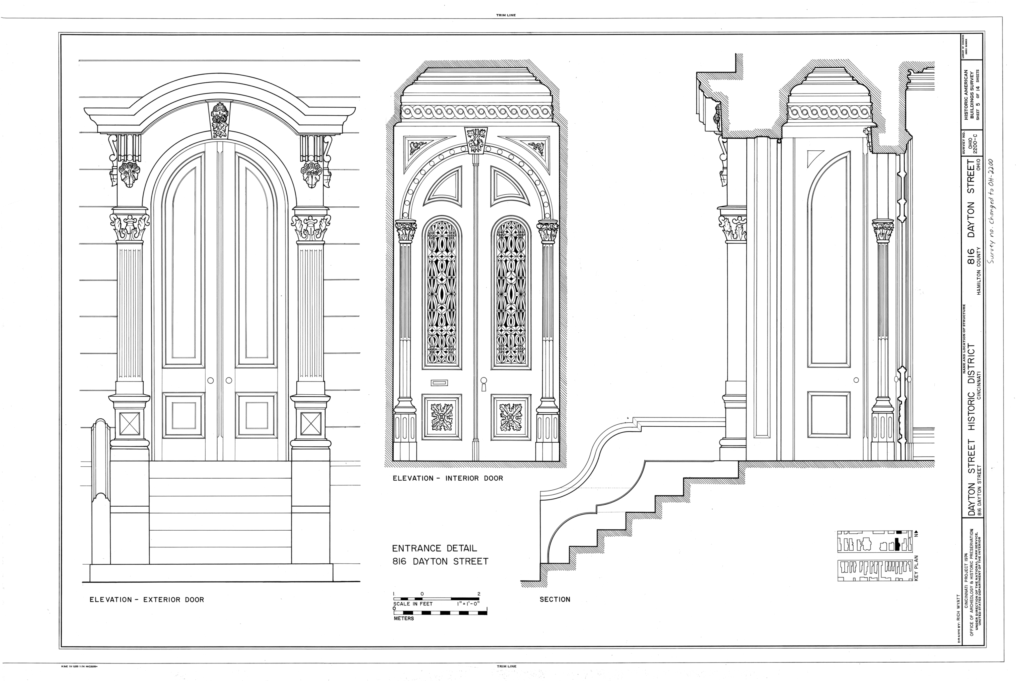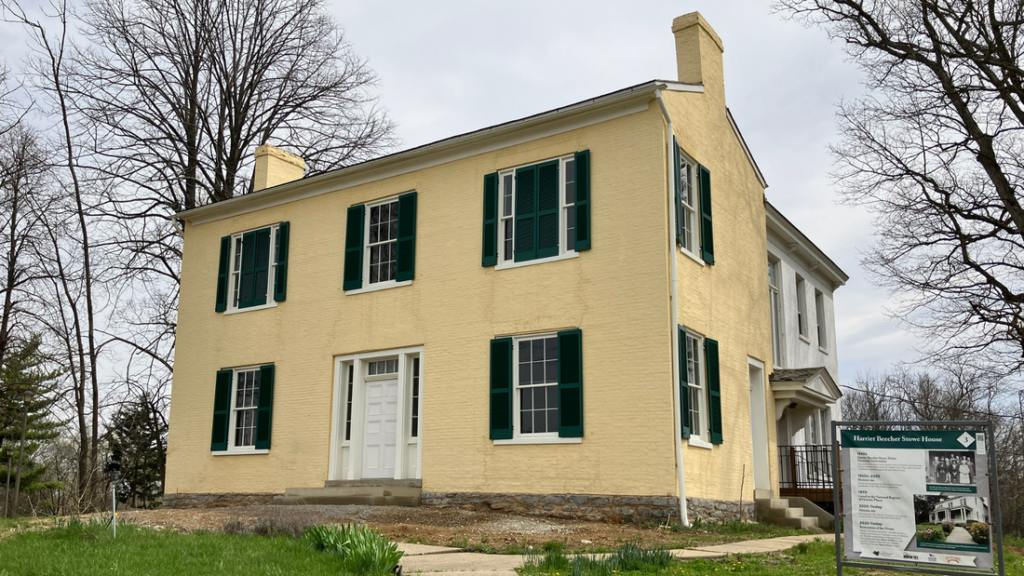What is Historic Preservation
Historic preservation operates across a spectrum of activities and typologies, and can be defined in a number of ways depending on a large number of variables. Below are several definitions of historic preservation, a brief history of the movement in the United States and the 4 standard treatments that make up historic preservation as defined by the National Park Service.
Below are a few different definitions of historic preservation:
Historic preservation is the act of identifying, protecting, and enhancing buildings, places, and objects of historical and cultural significance.- National Trust for Historic Preservation
Historic preservation is a conversation with our past about our future. It provides us with opportunities to ask, “What is important in our history?” and “What parts of our past can we preserve for the future?” Through historic preservation, we look at history in different ways, ask different questions of the past, and learn new things about our history and ourselves. Historic preservation is an important way for us to transmit our understanding of the past to future generations.- National Park Service
Historic preservation is the practice of thinking through how to manage historic resources, and can include things like cemeteries, whole neighborhoods, farms or infrastructure. It encompasses the creation of places like historic house museums that are open to the public, but it also includes places like private homes for individuals who want to keep the historic character of their residence, or business owners who might want to inhabit a historic building, but want to also make use of it through adaptive reuse.- Smithsonian
One of the earliest preservation efforts in the United States was to save Independence Hall in Philadelphia, Pennsylvania, from demolition in 1816. After several historical associations raised awareness of the issues, the City of Philadelphia purchased the property for preservation. Almost 40 years later, the home of the nation’s  first president, George Washington, was in danger of being torn down. To save the presidents home, Mount Vernon, the Mount Vernon Ladies Association was created, and they raised money to purchase the home from Washington’s descendants.
first president, George Washington, was in danger of being torn down. To save the presidents home, Mount Vernon, the Mount Vernon Ladies Association was created, and they raised money to purchase the home from Washington’s descendants.
⇐Mount Vernon, George Washington’s home. Public Domain Image
The majority of early efforts for historic preservation were focused on buildings associated with the founding of the county and individual buildings. This changed when, in 1909, The American Antiquities Act authorized the United States to designation national monuments on land owned and controlled by the federal government. As the first U.S. law to provide general protection for many general kinds of cultural or natural resources, it established the first national historic preservation policy for the United States. Shortly after, in 1916, the National Park Service was established as the administrative agency for national parks. Today, it is the sponsoring agency for most federal preservation programs.

⇐ Historic Williamsburg. Public Domain Photo.
While the Federal Government started establishing national standards through their early policies, preservation at the local level for districts first started in 1923 when Dr. William Goodwin relocated to Williamsburg Virginia to be the rector of the local parish church. Recognizing the importance of the town, he began a campaign to reconstruct the missing parts of the town. In the 1930’s local governments started establishing local regulatory controls through their zoning ordinances. In 1931, Charleston was the first city to establish a regulatory framework to protect the dismantling of historic homes and a review process for changes to the buildings. Shortly after, in 1936, New Orleans followed suit by establishing a local historic district in the Old French Quarter.

HABS measured drawing on 816 Dayton Street Entrance. ⇒
Federal programs and legislation dedicated to preservation continued to be established with the creation of the Historic American Buildings Survey (HABS) in 1934. This is first and only federal program to document historic buildings. The survey covered buildings and structures of all types from the smallest utilitarian structures to the largest and most monumental. The Department of the Interior’s National Park Service provided administration and funding and also established rigorous documentation standards. A companion program, the Historic American Engineering Record (HAER), was established in 1969 and emphasized technology and engineering, and has recorded projects such as canals, railroads, dams, and bridges. With HABS in place, in 1935, the National Park Service continued to expand its work and role in historic preservation with the Historic Sites Act which established and stated that it “is national policy to preserve for public use historic sites, buildings, and objects of national significance for the inspiration and benefit of the people of the United States.”
The majority of preservation efforts through the mid 1900’s were on 2 different tracks, public and private. With the creation of the quasi-public organization, The National Trust for Historic Preservation, these efforts were combined when Congress charted the organization to advance the polices established by the Historic Sites Act of 1935.
The largest and most significant act for Historic Preservation came in 1966 with the publication of a report With Heritage So Rich by the National Trust for Historic Preservation. This provocative and influential document illustrated what had been lost of American architectural heritage and proposed an expanded role for preservation supported by the federal government. These recommendations led to the National Historic Preservation Act of 1966, the most comprehensive preservation law the country had ever known. The Act established permanent institutions and created a clearly defined process of historic preservation. This Act established the National Register of Historic Places, encouraged the concept of locally regulated historic districts, authorized enabling legislation to fund preservation activities, required the establishment of State Historic Preservation Offices, established an Advisory Council on Historic Preservation, and required that federal projects consider their affect of historic resources.
1966 with the publication of a report With Heritage So Rich by the National Trust for Historic Preservation. This provocative and influential document illustrated what had been lost of American architectural heritage and proposed an expanded role for preservation supported by the federal government. These recommendations led to the National Historic Preservation Act of 1966, the most comprehensive preservation law the country had ever known. The Act established permanent institutions and created a clearly defined process of historic preservation. This Act established the National Register of Historic Places, encouraged the concept of locally regulated historic districts, authorized enabling legislation to fund preservation activities, required the establishment of State Historic Preservation Offices, established an Advisory Council on Historic Preservation, and required that federal projects consider their affect of historic resources.
A decade later, in 1976, the federal government began providing tax incentives for historic building renovations in the form of accelerated depreciation. Congress introduced the Historic Tax Credit program in 1979, with anyone who rehabilitated a building 20 years or older receiving a 10 percent credit based on qualified expenditures. The Tax Credit was revised several times to what is today. The Historic Tax Credit program continues to be the most successful tax credit program in the country and one of the only programs that creates revenue for the government.
There are four unique approaches to the treatment of historic properties: preservation, rehabilitation, restoration and reconstruction. Deciding which of these approaches is best for a historic building is key to a job well done. People often throw out words like reconstruction and restoration to describe any work going into an older or historically significant property. However, the four treatment approaches discussed below are the standard and specific language used within the field of historic preservation in the United States.
- Preservation focuses on the maintenance and repair of existing historic materials and retention of a property’s form as it has evolved over time. This is done with frequency throughout Cincinnati. Imagine a traditional single Greek Revival house that was built in 1850, received Italianate ornamentation in the 1880s, and had an early-20th century addition built onto its rear. Today’s owner would be engaging in preservation by retaining all of the accretions of the building and maintaining the fabric in sound condition, with little to no replacement. Such buildings, coupled with having a little background knowledge, are excellent resources for interpreting cultural changes over time.

⇐ The Standard in Covington, Kentucky is a rehabilitation and adaptive reuse project of an old service station into a restaurant. Photo from the Standard Covington.
- Rehabilitation acknowledges the need to alter or add to an historic property to meet continuing or changing uses while retaining the property’s historic character. This approach is also commonly referred to as adaptive re-use or adaptive use. A prime local example of rehabilitation can be seen in the American Can Building in Northside. The building was a former factory that made can-making machines. It was built in 1921 and closed in 1963 and after a few other uses was largely vacated in 1978. In 2011, after extensive work, the building was reopened as a multi-family apartment complex.
- Restoration depicts a property at a particular period of time in its history while removing evidence of other periods. This, too, happens frequently in the historic district; for example, a single house may have had its side porch infilled sometime in the 1960s, and returning the porch to its original form by removing the infill would constitute a restoration, albeit on a small scale. Perhaps the most well-known local example is the work at President William Howard Taft House on Auburn Avenue which depicts the house as it was when President Taft lived in the ho
 use.
use.
The Harriet Beecher Stowe House is a local example of a restoration project. Image from Harriet Beecher Stowe House Museum. Photo taken by Cincinnati Preservation Association. ⇒
- Reconstruction re-creates vanished or non-surviving portions of a property for interpretive purposes – think of replicating a structure that is no longer extant. This method requires thorough research. One notable reconstruction of preservation yore comes from the restoration of Colonial Williamsburg in the early-20th century.
